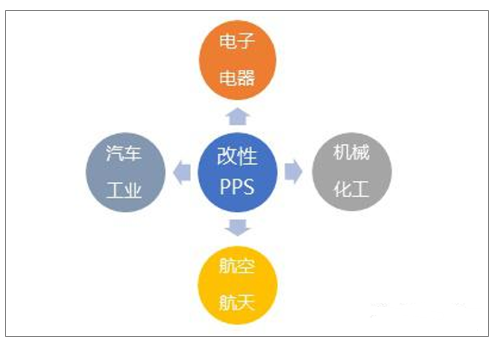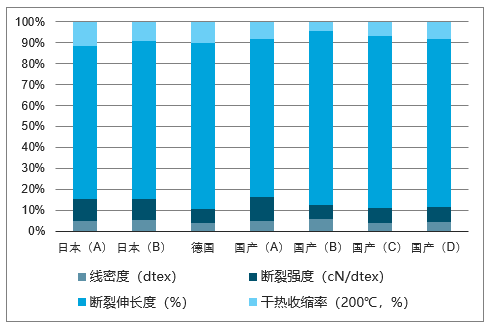
 【 微信扫码 】
【 微信扫码 】
Because of its excellent chemical corrosion resistance, good thermal stability, superior chemical corrosion resistance, and excellent mechanical properties and electrical insulation properties, PPS is widely used in filter materials with special functions, environmental protection, automotive industry, electronics industry, petrochemical and chemical industries. At present, in the field of high temperature filtration, PPS fiber has become the preferred filter material for flue gas dust removal in coal-fired power plants and exhaust gas filtration and dust removal upgrades in municipal waste incineration plants.
PPS product features

Data source: public information collation
Related report: "2019-2025 China Chemical Raw Materials and Chemical Products Manufacturing Industry Market Demand Forecast and Investment Future Development Trend Report" released by Zhiyan Consulting.
PPS upstream and downstream industry chain
Data source: public information collation
1. Analysis of downstream application of modified PPS
Modified PPS is widely used in the automotive industry, electrical and electronic, aerospace, mechanical and chemical industries.
Application fields of modified PPS

Data source: public information collation
1. Automobile industry
Modified PPS is an ideal material for lightening automobiles and can be used to make automobile parts, such as rotating parts, oil distributor parts, oil pumps, fuel injectors, carburetors, evolvers, carburetor pumps, connectors, radiator parts, etc. . At present, each car in China uses an average of 2-3kg PPS, which is far lower than the level of developed countries. Since the quality of domestic PPS modified materials is still not high enough, most of them flow to auto repair factories. The PPS modified materials used in domestic new cars basically rely on imports.
2. Electronic appliances
In the electronic and electrical industry, modified PPS can be used to make power strips, sockets, transformers, insulating plugs, switches, contactors, switches and circuit breakers, capacitors, resistors, rice cookers, electric irons, integrated circuits and other components and The packaging material can also be used to prepare accessories for televisions, cameras, copiers, computers, microwave ovens and other electrical appliances, and to prepare electronic watch components, CD parts and shells for small automated circuit boards.
3. Aerospace
Modified PPS is used in various military products, such as various weapons, aviation, aerospace, stealth fighters, bombers and armored vehicles. But at present, due to the poor quality of domestic PPS products, it can only meet the needs of low-end customers and mainly rely on imports in this field.
4. Mechanical chemical industry
The demand for alternatives to stainless steel and dissimilar alloys for mechanical parts of equipment in the chemical industry is driving the growing consumption of PPS. Compared with metal parts, PPS parts are more durable in extreme environments and have a high cost performance.
2. Analysis of PPS Capacity Concentration
In 2017, the global PPS production capacity was 215,000 tons, and the actual output was 117,000 tons. The global PPS industry is highly concentrated, and the top five PPS manufacturers of Japan Toray, Japan Ink DIC, Solvay, Shinwasei and Fortron account for more than 50% of the global PPS production capacity. The world's major PPS manufacturers are located in the United States, Japan and China. Among them, Japan is the largest producer of PPS, and its production capacity accounts for about 45% of the world's total production capacity.
Major PPS Manufacturers and Capacity

Data source: public information collation
3. Environmental protection and automobile industry build space for PPS demand growth
Global demand for PPS will continue to grow steadily with the development of environmental protection, automotive and electronics industries. From 2011 to 2017, the global demand for polyphenylene sulfide increased at an average annual growth rate of 10.26%. In 2017, the global demand for PPS was about 11.5%. tons. As a strategic new material strongly supported by the state, PPS has been included in my country's "Guidelines for the Key Fields of High-Tech Industries with Current Priorities (2011)" and "The 12th Five-Year" Key Product Catalog for New Materials Industry. With the strengthening of the country's governance of the environmental protection industry, my country has become the largest plastic consumer in Asia, and the demand for PPS has also increased by an average of 2 digits per year. The total market demand for PPS in my country has increased from 13,000 tons in 2010 to 47,000 tons in 2017, with an average annual compound growth rate of about 20%. The PPS industry continues to grow rapidly.
PPS consumption structure

Data source: public information collation
Polyphenylene sulfide resin is mainly used in environmental protection, electrical and electronic, automobile industry and other fields, and its consumption accounts for more than 70% of the total consumption of polyphenylene sulfide. One of the main applications of PPS fiber is the production of dust bags to reduce dust emissions such as coal-fired power plants, cement plants, and waste incineration plants. This application is one of the application areas where PPS has high added value. In the past ten years, the demand for PPS fiber in the coal-fired power and coal-fired boiler industries in developed countries and regions such as Europe, America and Japan has maintained an annual growth rate of about 25%. Some developing countries, such as India, Brazil and other countries have also begun to adopt bag-type dust removal technology in large quantities, which has increased the global market demand for PPS fibers. However, my country is a country with a primary energy structure dominated by coal, which determines that thermal power generation will be the main method of power production in my country for a period of time in the future. As the country has vigorously promoted the development of environmental protection in recent years, relevant environmental protection measures have driven the rapid growth of PPS demand. In 2011, the State Council promulgated the "Emission Standard of Air Pollutants for Thermal Power Plants (GB13223-2011)", which raised the emission standard of smoke and dust from thermal power plants to less than 30mg/m3. In April 2018, Shandong Province promulgated "Air Pollutants from Thermal Power Plants in Shandong Province" Emission Standards (Draft for Comment)”, once again raising the relevant standards for multiple indicators of thermal power plants. It is expected that under the macro background of increasingly strict emission standards and increasing enforcement, the implementation of relevant policies will help the application of PPS and drive the continuous and rapid growth of PPS sales.
"Shandong Province Thermal Power Plant Air Pollutant Emission Standard (Draft for Comment)" Limits of Pollutant Emissions from Oil-fired Boilers or Gas Turbine Units

Data source: public information collation
"Shandong Province Thermal Power Plant Air Pollutant Emission Standard (Draft for Comment)" Limits of Emission Pollutants from Gas Boilers or Gas Turbine Units

Data source: public information collation
"Shandong Province Thermal Power Plant Air Pollutant Emission Standard (Draft for Comment)" Limits of Pollutant Emissions from Other Fuel Boilers

Data source: public information collation